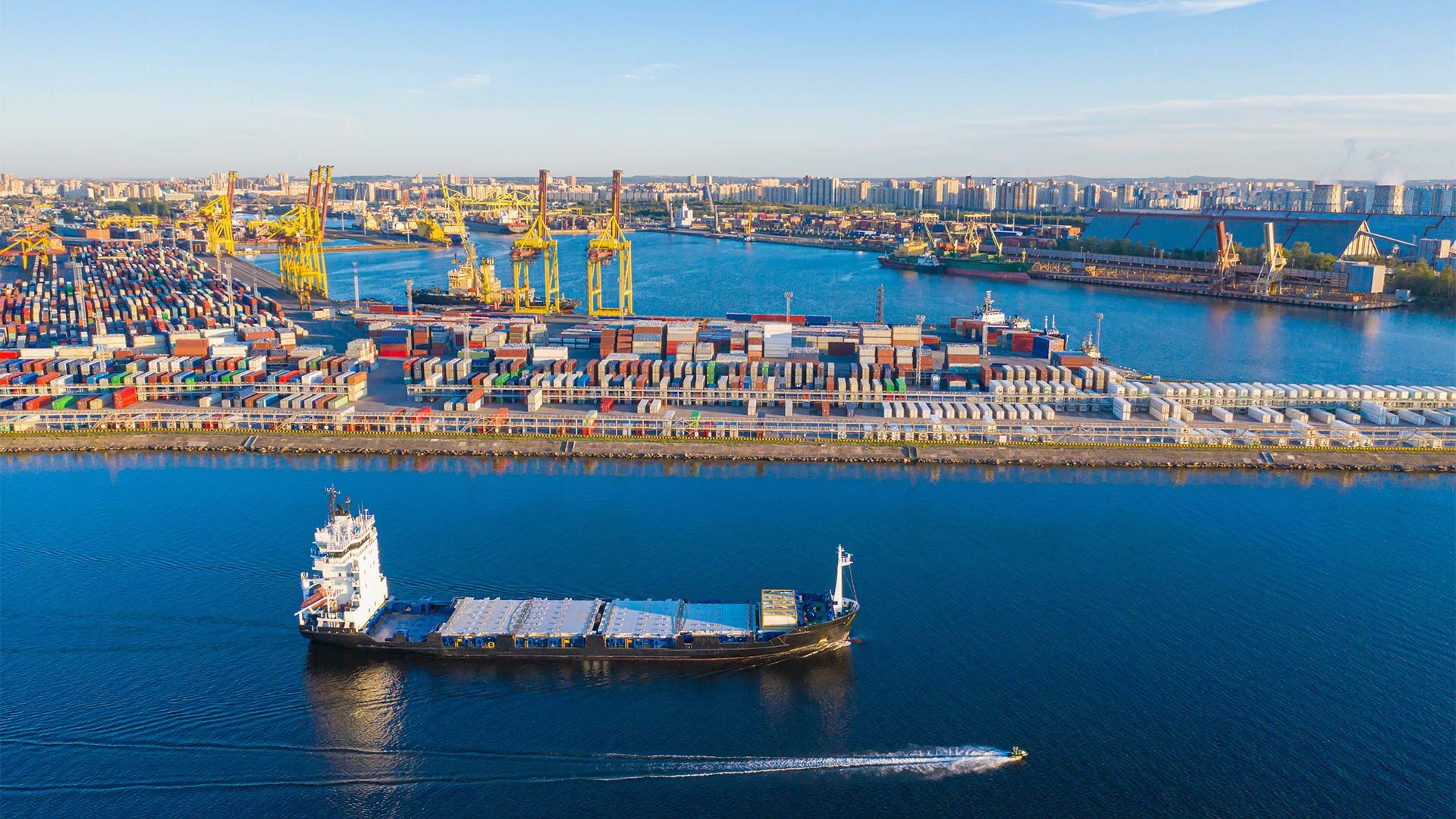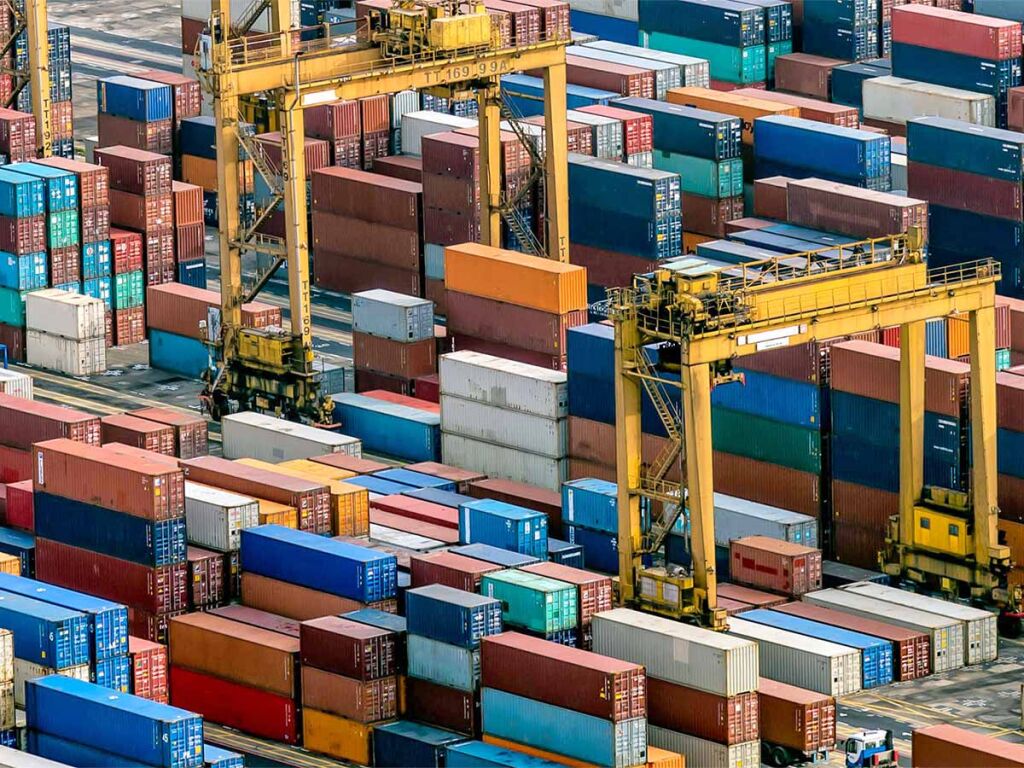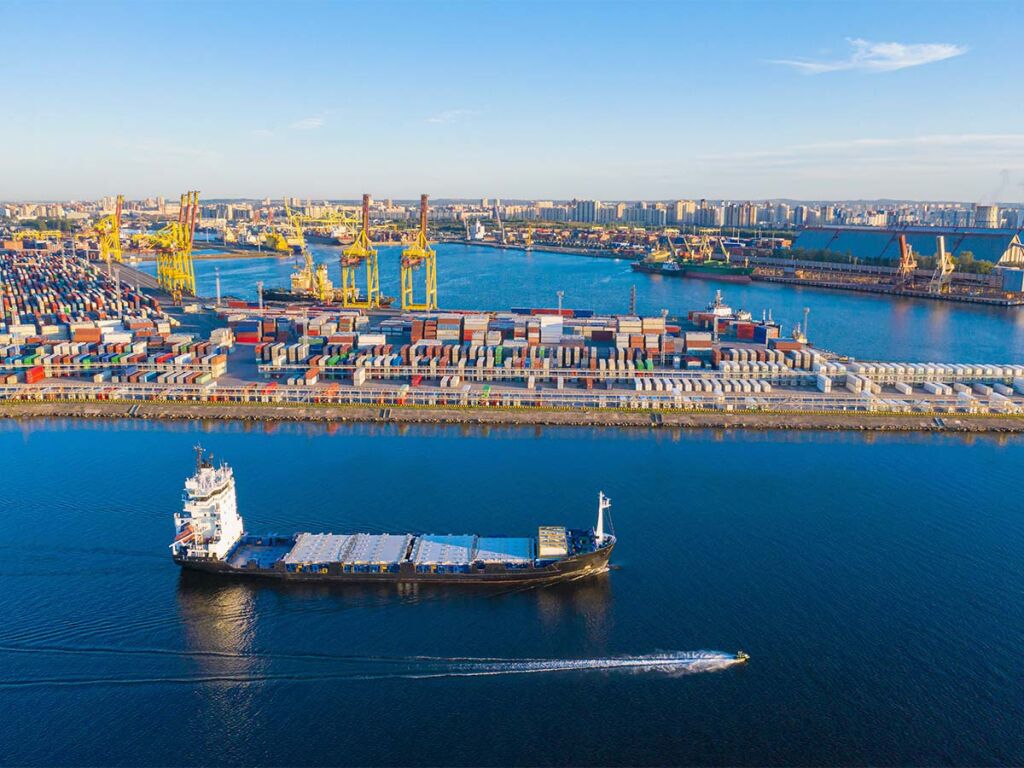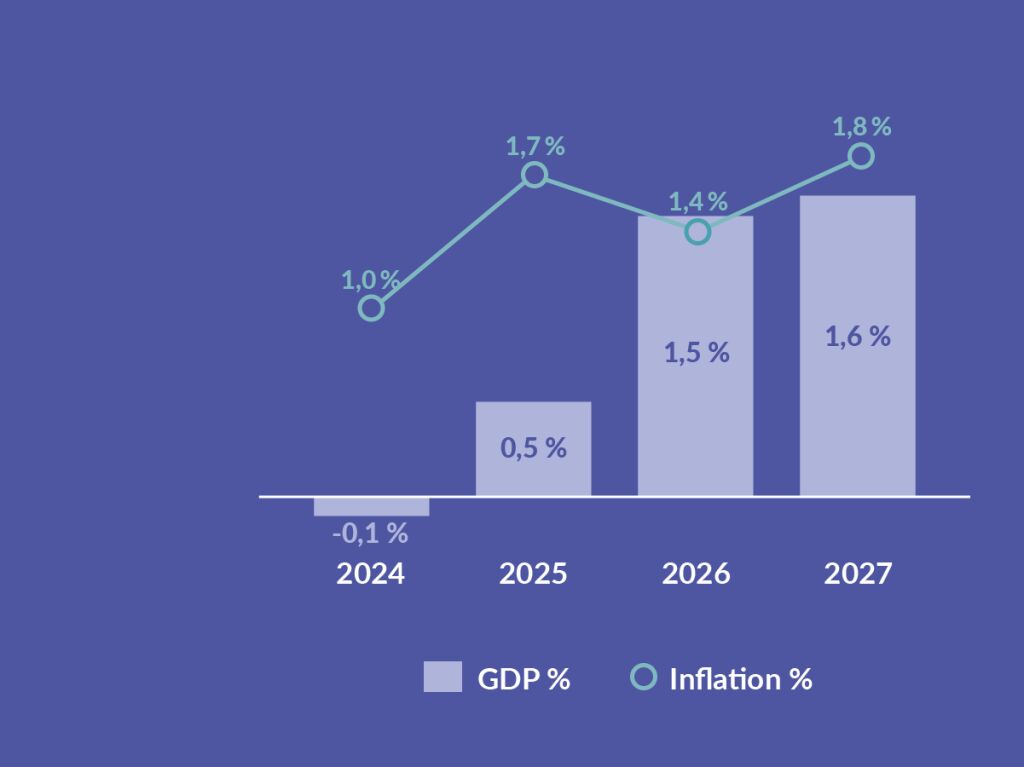Simply Short
Trade war will slow the growth in Finland’s economy
Growth in the Finnish economy is gradually picking up, but tariffs and elevated uncertainty will slow the recovery from recession. The trade war will hamper Finland’s export growth. Nevertheless, average household income will rise and inflation will remain moderate. Lower lending rates will support the recovery in consumption and investment. When growth in the economy gathers pace, employment will also gradually start to improve. Public spending will continue to exceed revenues, and so Finland’s public debt will continue to rise.

The production of goods and services in Finland is starting to grow again this year. Nevertheless, the economy’s recovery from recession will be slow. Households and businesses are still cautious because of the uncertainty in the global economy. Uncertainty is being fuelled by the unpredictability of the United States’ tariff policies in particular. The uncertainty will decline when agreements are reached on new tariffs between trading partners, but uncertainty will not disappear completely in the immediate years ahead. Growth in the global economy will nevertheless strengthen gradually, and this will boost Finland’s exports.
There are already signs of domestic demand picking up. Average household income will be up significantly this year, and wage increases will no longer be eroded by inflation, or the general rise in prices. Inflation is low and will continue to be significantly below 2% in the years of the forecast. In particular, the prices of electricity, fuel and imported goods will rise by only a little. The reduction in bank lending rates will also allow greater leeway for indebted households.
The activation of growth in the economy is now being hampered particularly by the weakness of consumer and business confidence. Households are especially concerned about the rapid increase in unemployment. Confidence is nevertheless expected to gradually be restored as the global situation eases. Households will be ready to consume more, the housing market will pick up, and businesses will increase their investments.
Growth in the Finnish economy will be on a stronger foundation in 2026 and 2027. Private consumption and investment growth in particular will gather pace. The stagnation in the housing market will start to ease, and the demand for homes, including new-build homes, will pick up. Unemployment has been increasing substantially. When the upswing gathers pace, there will once again be a greater supply of jobs. From 2026 onwards, employment will improve and, correspondingly, unemployment will fall.
Improved economic conditions will also boost the tax revenues of central and local government. Public expenditure will nevertheless still exceed public revenue in the next few years, and this shortfall will be made up by taking on further debt.








